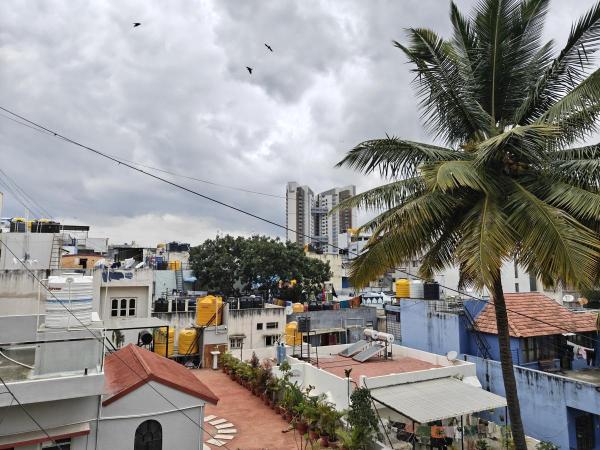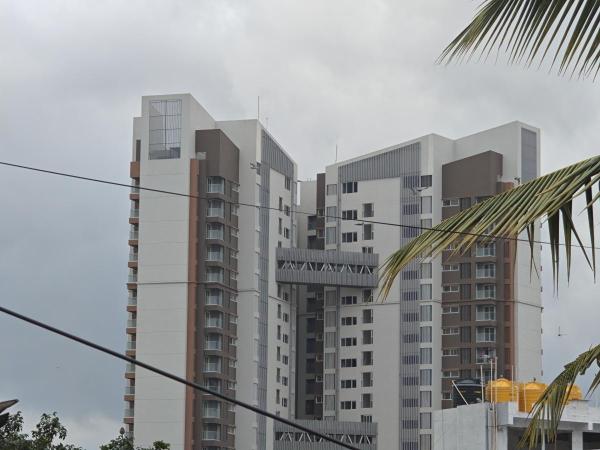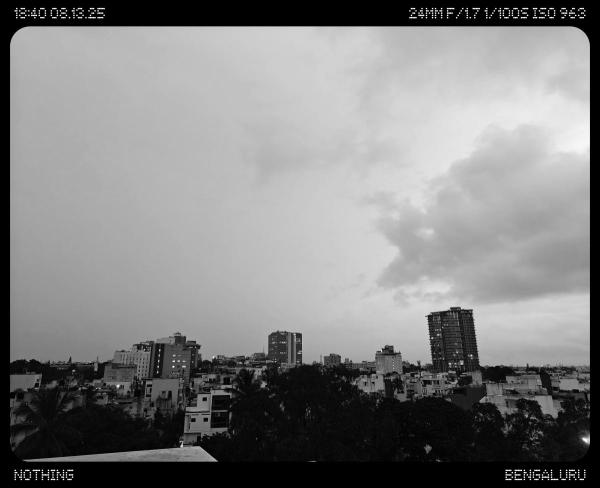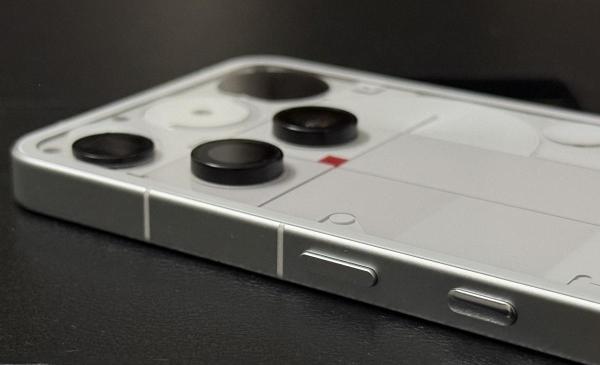
If there’s one thing Nothing has always nailed, it’s making sure their phones look nothing like anything else out there. But with the Nothing Phone (3), the conversation around design hasn’t been entirely glowing — and yes, that’s a pun.
For the past couple of weeks, I’ve been using the Phone (3) as my daily driver, and the very first thing you notice is that this design will divide people. The triple rear camera setup — a first for Nothing — is unevenly placed, and visually it clashes with the new half-circle LED light strip on the back. The arrangement reminds me of a mini planetary system, with the LEDs orbiting around the main cluster of lenses. It’s not everyone’s idea of elegance, but it’s definitely distinct.
Add to that the exposed circuit-like patterns under the transparent glass back, and you’ve got Nothing’s signature “geek chic” on full display. But this time, they’ve added something that’s causing more debate than admiration — the Glyph Matrix.
Glyph Matrix: Gimmick or genius?

Sitting awkwardly in the upper-right section of the rear panel is a monochrome dot-matrix display composed of miniature LED lights. It’s small, blocky, and for lack of a better word, hideous. It also comes with a strange little touchpad underneath it, used to control certain functions. I like the placement of that button from a practical standpoint.

Coming to the functionality of the Glyph Matrix, though, it’s more than a novelty:
- Battery indicator: Shows real-time battery percentage and plays charging animations.
- Digital clock: Displays time or simulates the sun’s movement.
- Stopwatch/timer: For quick access during workouts or cooking.
- Mini games: Rock-Paper-Scissors, Spin the Bottle, and even a Magic 8-Ball mode that randomly says “yes” or “no.”
- Glyph Mirror: A camera viewfinder, which can only be helpful in positioning yourself the frame while taking a selfie using the rear cameras.
Is it cool? Kind of. Is it worth the awkward placement? Not entirely. While I appreciate the creativity, I found myself using it less and less, especially since most of these functions are easier to access from the front screen.
Display
On the front, Nothing has kept things clean and immersive—minimal bezels, flat glass, and a bright, vibrant panel that’s perfectly usable under harsh sunlight. The viewing angles are excellent, colours pop, and overall, it’s a joy to watch videos or scroll through feeds.
But here’s the thing: it’s LTPS, not LTPO. On a phone that costs Rs 80,000, that’s a glaring omission. LTPO would’ve allowed variable refresh rates down to 1Hz, saving more battery and delivering smoother animations in some cases. Instead, you’re stuck with the less efficient LTPS tech.
The other letdown is the use of Gorilla Glass 7i. It’s fine for protection, but again, at this price, you’d expect Gorilla Glass Victus 2. It’s like buying a luxury car and finding out the dashboard plastic is the same as the budget hatchback.
Design
Nothing Phone (3) feels substantial. There’s a good weight to it—partly due to the massive 5,500 mAh battery—and the build feels premium with solid metal frames. The buttons are metallic, satisfyingly clicky, and the bezels (both front and back) are perfectly uniform.
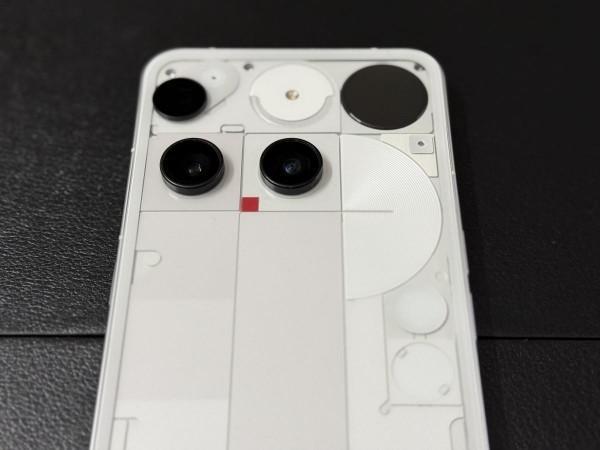
It’s on the heavier side and definitely larger than average, so if you have small hands, one-handed use will be tricky. But the weight distribution is good enough that it never feels top-heavy.
Cameras
This is the first Nothing phone to sport a triple 50MP camera setup:
Main: 50MP, 1/1.3-inch sensor
Telephoto: 50MP, 3x optical zoom (up to 60x AI-assisted zoom)
Ultra–wide: 50MP for sweeping shots
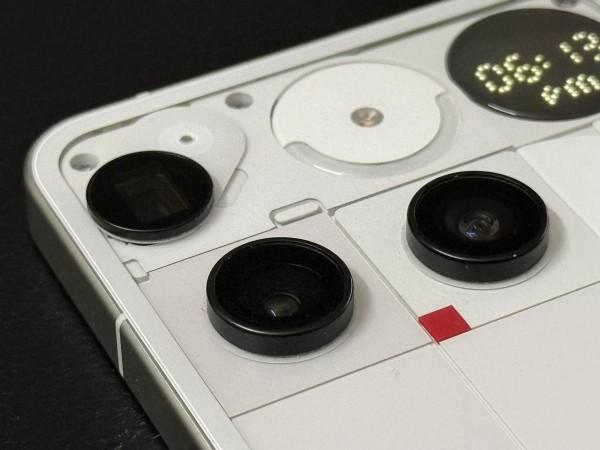
To summarise the overall experience with this camera setup, which is by far Nothing’s best, read the four points below:
- Portraits: Fantastic edge detection, natural background blur, and accurate skin tones.
- Macros: The real star here. I’ve used a lot of phones over the years, but this might be the most fun I’ve had with a dedicated macro mode in a very long time.
- Low-light: Solid results with good detail and balanced highlights/shadows.
- Black & White: Nothing’s B&W mode in good lighting is just… chef’s kiss. The contrast and texture detail make these shots feel cinematic.
Where it stumbles is colour consistency between lenses. Switch from the main to ultra-wide and you’ll notice a shift in tone and saturation. The shutter is generally fast but can lag slightly in tricky lighting, resulting in blurry images.
1/
Is it the best camera for Rs 80K? Not there fully. But is it the best Nothing has made so far? Absolutely.
Camera samples below:
1/
1/
1/
Performance
Under the hood, you get the Qualcomm Snapdragon 8s Gen 4 (4nm), paired with LPDDR5 RAM and UFS 3.1 storage. It’s not the top Snapdragon chip, but it’s more than capable of handling anything you throw at it—from heavy multitasking to graphics-intensive games.
1/
The software experience is where Nothing really shines. Running Android 15 with Nothing OS 3.5, the phone feels fast, clean, and refreshingly uncluttered. You can theme all icons into neat monochrome circles, switch between light/dark minimalist palettes, and enjoy some of the most polished widgets on any Android device. There were some minor issues, like pulling down notifications and returning to the call wouldn’t work sometimes.

Nothing is promising 5 years of Android updates and 7 years of security patches, which is flagship-level commitment. Audio is loud, clear, and well-separated thanks to stereo speakers. Watching movies or playing games without headphones is genuinely enjoyable.

If I had to nitpick, the phone gets warm during charging and extended gaming — not uncomfortably so, but enough to notice.
I’m still not sold on the Essential Space, but I love the concept and Nothing’s approach to it. like adding essential search and flip to record, integration with Google Calendar to reminders can be synced across platforms. Blame it on the muscle memory with the whole dedicated button. For me, it’s equivalent to iPhone 16 Pro’s Camera Control.
1/
Battery life
A 5,500 mAh battery in a phone this size means endurance is not a concern. On moderate use, I easily got over 8 hours of screen-on time. Even with heavy use — gaming, photography, streaming — it still managed about 5 hours.
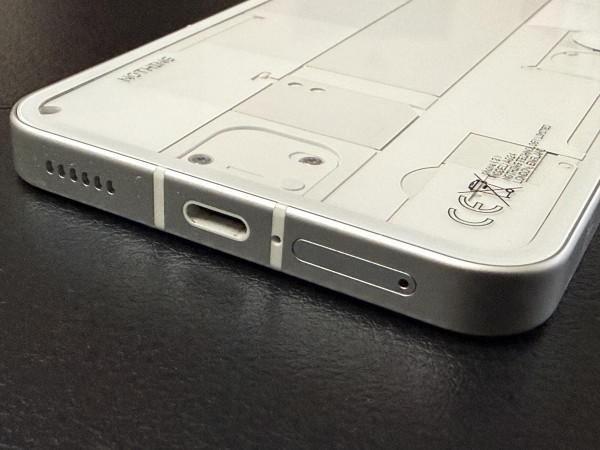
Charging is reasonably quick, though not class-leading. It supports 65W wired charging and 15W on wireless. Following the industry suit, there’s no brick in the box. With a 45W brick, the phone would charge fully in about 40 minutes, but I’m guessing with the 65W brick, it can be 30 minutes.
Pricing: The real problem
Here’s where the Nothing Phone (3) loses me—₹80,000.
For this price, you’re competing with the likes of the Samsung Galaxy S24+, iPhone 15, and even the OnePlus 12. And in that company, you can’t show up without LTPO, Victus glass, or a top-tier Snapdragon.
If Nothing had priced this in the Rs 50K range, it would’ve been a genuine disruptor— great software, strong battery life, and a fun camera experience at an aggressive price. But at Rs 80K, the compromises stand out more than the strengths.
Verdict
Nothing Phone (3) is bold, quirky, and unapologetically different. It sure grabs attention with its planetary camera-LED combo, the controversial Glyph Matrix, but other things like macro photography, software experience, battery life, and general day-to-day performance, is pretty much on point. Unless you’re deeply into Nothing’s aesthetic and ecosystem, it’s hard to justify over more complete flagships in this bracket.
-
‘Arif Khan will give kidney to Premanand Maharaj’ … Muslim man offered, said- society needs a saint like you

-
Chanakya Policy: Never tell the enemy these 3 things, otherwise life can be ruined!

-
MCA unveils legendary cricketer Sunil Gavaskar’s statue at Wankhede stadium

-
Viktor Gyokeres, Jurrien Timber bag braces as Arsenal hammer Leeds United 5-0 in Premier League

-
In 140 countries traveling, 400 cities and 3 years in a luxurious villa on the sea; What is ‘this’ Golden Passport Plan?




